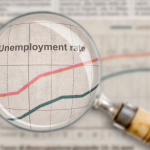It depends on factors such as your down payment and your credit score
Fact checked by Amanda JacksonReviewed by Charlene RhinehartFact checked by Amanda JacksonReviewed by Charlene Rhinehart
What Is Private Mortgage Insurance (PMI)?
Private mortgage insurance (PMI) is a type of insurance policy that protects lenders from the risk of default—or nonpayment by the borrower—and foreclosure. PMI helps homebuyers who are either unable or choose not to make a significant down payment obtain mortgage financing at an affordable rate. If a borrower purchases a home and puts down less than 20%, the lender will require the borrower to buy insurance from a PMI company prior to signing off on the loan.
Key Takeaways
- Private mortgage insurance (PMI) is required when the down payment on a house is under 20% of the selling price.
- As of 2024, the PMI cost varies between 0.5% and 6% of the loan balance.
- You can pay PMI in monthly installments or as a one-time payment, though the rate for a single payment would be higher.
Understanding Private Mortgage Insurance (PMI)
PMI benefits the lender, and the cost adds to your monthly housing payments. Typically, you send one payment to your lender each month to cover the mortgage (principal plus interest) and the insurance premium.
PMI rates typically range from 0.5% to 1.5% of the loan amount annually. However, PMI can cost as much as 6%, based on various factors, including the type of loan, whether it’s an adjustable-rate mortgage (ARM) or a fixed-rate. A mortgage calculator can be a good resource to budget for the monthly cost of your payment.
Your PMI rate will depend on several factors, including the following.

Investopedia / Julie Bang
Down Payment
PMI will cost less if you have a larger down payment (and vice versa). If a borrower puts 3% down versus a 10% down payment, it means many more months of making PMI payments to the bank.
Credit Score
A borrower’s credit score is a numerical representation of your creditworthiness and the ability to repay your debts on time and in full. A credit score can range from 300 to 850 and is based on a person’s credit history, which includes the number of late payments and the total amount of debt outstanding. The higher the score, the more creditworthy a borrower appears to banks and mortgage lenders. As a result, the higher the credit score, the lower the PMI premium.
Potential for Property Appreciation
If you live in a market with declining property values, your PMI premium might be higher. Conversely, if you live in an area where home values are appreciating, the value of the home could increase enough for you to stop the PMI payments. In other words, if your home’s value has risen over 20%, you would no longer need to pay PMI. However, you may need to pay for an appraisal to verify the price appreciation.
For veterans and servicemembers who qualify, the Department of Veterans Affairs (VA) offers mortgage loans through private lenders with no PMI, limited closing costs, and no down payment.
Loan Type
Different loan types can come with different PMI rates. A conventional mortgage, which is usually a fixed-rate mortgage issued by a bank, might have a lower PMI than adjustable-rate mortgages (ARMs).
An FHA mortgage insured by the Federal Housing Administration (FHA) can help first-time homebuyers and those with low-to-moderate incomes. FHA loans have their own PMI structure, called a mortgage insurance premium (MIP).
All FHA mortgage loans cost 1.75% upfront. However, you will also pay an annual or monthly premium, which varies based on the size of the loan and down payment. The premium rate is multiplied by the loan balance.
Below are the annual percentage premiums for a loan, less than or equal to $726,200, with a down payment equaling:
- 10% or more: 0.50% annually for 11 years
- 5% or more but less than 10%: 0.50% annually for the entire loan term
- Less than 5%: 0.55% annually for the entire loan term
Despite the costs, FHA loans offer benefits, including a lower down payment, as low as 3.5%, and a credit score as low as 580 versus the 620 typically required for conventional mortgage loans.
Borrower Occupancy
If the financed property is owner-occupied (you will be living there), your PMI premium will be lower than if it is a rental or an investment property.
3 Years
The amount of time you need to live in a home that makes a single, up-front PMI payment the more affordable option.
Example of Private Mortgage Insurance (PMI)
Let’s say you have a 30-year, 2.9% fixed-rate mortgage for $200,000 in New York. Your monthly mortgage payment (principal plus interest) would be $832.00. If PMI costs 0.5%, you will pay an additional $1,000 per year or (0.005 * $200,000). As a result, your monthly PMI payment would be $83.33 each month, or ($1,000 ÷ 12), increasing your monthly payment to $915.33.
You may also be able to pay your PMI upfront in a single lump sum, eliminating the need for a monthly payment. The payment can be made in full at the closing or financed within the mortgage loan. In many cases, this is the more affordable option as long as you plan on staying in the home for at least three years. For the same $200,000 loan, you might pay 1.4% upfront, or $2,800.
However, it’s important to consult your lender for details on your PMI options and the costs before making a decision.
Do I Need to Buy Private Mortgage Insurance?
If you finance the purchase of your home and put less than 20% down at the closing, the lender will require you to buy private mortgage insurance.
When Can I Cancel Private Mortgage Insurance?
Once you’ve paid down 20% of your loan balance, you can contact your mortgage lender to request a PMI cancellation. However, your lender must cancel your PMI automatically once you’ve paid down 22% of your loan.
How Do I Figure Out How Much PMI Will Pay?
Your mortgage lender will determine the PMI rate and multiply the percentage by the loan balance. For example, if the PMI rate is 0.5% and your loan amount is $300,000, your PMI will cost $1,500 annually or $125 monthly.
The Bottom Line
If your down payment is less than 20% when buying a home, you must pay for private mortgage insurance (PMI). PMI protects the lender in case the borrower defaults on the payments. Once you’ve paid down 20% of the loan balance, you can request the cancellation of PMI. However, the lender must automatically cancel PMI once you’ve paid off 22% of your loan.
Read the original article on Investopedia.


